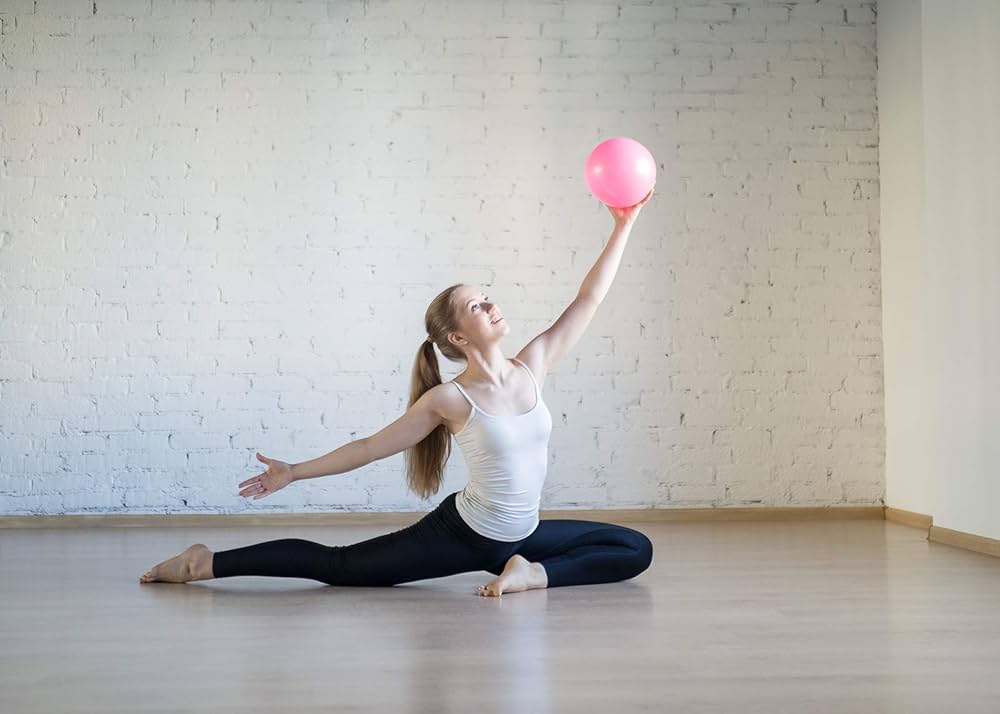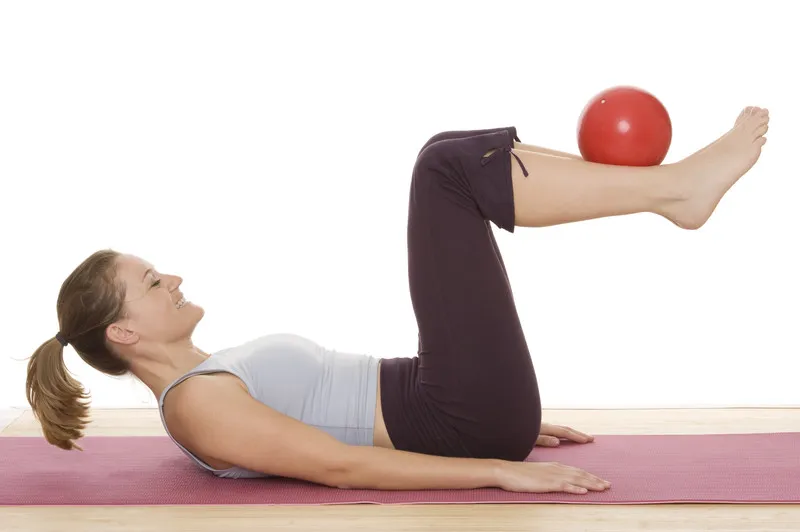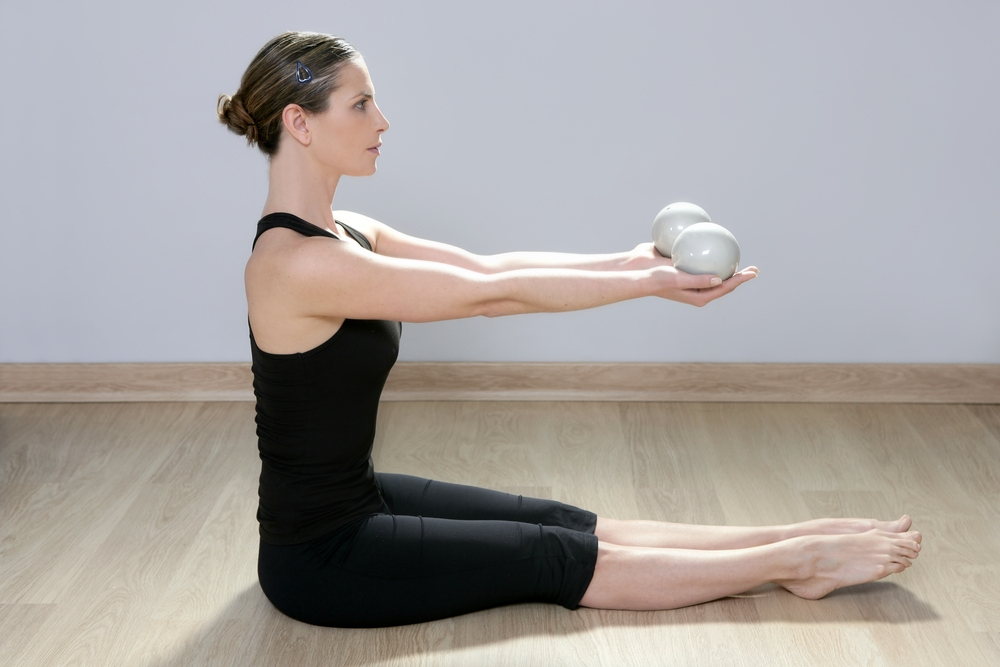Stability training has gained considerable attention in recent years, particularly in the realm of fitness and rehabilitation. Among the various tools available for enhancing stability, the Pilates mini ball has emerged as a versatile and effective option. This article explores how incorporating a Pilates mini ball into stability training can redefine your approach to fitness, enhance core strength, and improve overall body awareness.
The Importance of Stability Training
Stability training is essential for developing a strong foundation in physical fitness. It focuses on strengthening the muscles that support the spine and pelvis, improving balance, coordination, and overall body control. This type of training is particularly beneficial for athletes, individuals recovering from injuries, and those seeking to enhance their general fitness levels.
Benefits of Stability Training
Engaging in stability training offers numerous benefits. Firstly, it helps to improve posture by strengthening the muscles that support the spine. Secondly, it enhances athletic performance by increasing balance and coordination, allowing for more efficient movement patterns. Lastly, stability training can reduce the risk of injuries by promoting better alignment and muscle function. Furthermore, it can also lead to improved mental focus and concentration, as many stability exercises require a degree of mindfulness and awareness of body positioning. This mental engagement not only aids in physical performance but can also translate into better performance in other areas of life, such as work or study.
Targeting Core Muscles
The core muscles play a pivotal role in stability training. These muscles include not only the abdominal muscles but also the muscles of the lower back, hips, and pelvis. By focusing on core stability, individuals can improve their overall strength and functional movement, which is crucial for everyday activities and athletic performance. Additionally, a strong core is vital for maintaining proper form during various exercises, thereby maximising the effectiveness of workouts and minimising the risk of injury. Engaging in exercises such as planks, bridges, and stability ball workouts can significantly enhance core strength, leading to improved performance in sports like running, cycling, and swimming. Moreover, the benefits of core stability extend beyond physical fitness; they can also enhance daily activities, making tasks such as lifting, bending, and even sitting for prolonged periods more comfortable and efficient.
Introducing the Pilates Mini Ball
The Pilates mini ball is a small, inflatable ball that is often used in Pilates workouts to enhance exercises and provide additional resistance. Its compact size makes it easy to incorporate into various workouts, and its versatility allows for a wide range of exercises targeting different muscle groups.
Why Choose a Mini Ball?
The mini ball is an excellent tool for stability training due to its unique properties. It provides an unstable surface, which challenges the body’s balance and coordination. This instability forces the core muscles to engage more deeply, leading to improved strength and stability over time. Furthermore, the mini ball is lightweight and portable, making it an ideal choice for home workouts or on-the-go fitness routines.
Versatility of the Mini Ball
One of the standout features of the Pilates mini ball is its versatility. It can be used in a variety of exercises, from traditional Pilates moves to strength training and rehabilitation exercises. Whether performing a simple bridge or a more complex balance exercise, the mini ball can enhance the effectiveness of the workout and keep it engaging.
In addition to its use in Pilates, the mini ball can be seamlessly integrated into other fitness disciplines such as yoga and functional training. For instance, it can be placed between the knees during a yoga pose to deepen the engagement of the inner thigh muscles, or used in a functional training circuit to add an element of instability to squats and lunges. This adaptability not only keeps workouts fresh and exciting but also allows individuals to tailor their routines to meet specific fitness goals, whether that be improving flexibility, building strength, or enhancing overall body awareness.
Moreover, the mini ball is particularly beneficial for those recovering from injuries or looking to prevent them. Its gentle resistance can help in rehabilitation exercises, allowing individuals to strengthen muscles without placing undue stress on joints. By incorporating the mini ball into their routines, users can work towards regaining strength and mobility in a safe and effective manner, making it an invaluable tool for both seasoned athletes and beginners alike.
Incorporating the Mini Ball into Your Routine
To reap the benefits of the Pilates mini ball, it is essential to incorporate it effectively into your stability training routine. Here are some practical tips and exercises to guide you.
Starting with Basic Exercises
For those new to stability training or the mini ball, it is advisable to start with basic exercises. Simple movements such as the mini ball squeeze can help to activate the core muscles and improve stability. To perform this exercise, sit on a chair with your feet flat on the ground, place the mini ball between your knees, and gently squeeze. This action engages the inner thigh and core muscles, laying a solid foundation for more advanced exercises. Additionally, this exercise can be enhanced by incorporating a deep breath in as you squeeze the ball, which not only helps in muscle activation but also promotes relaxation and mindfulness, crucial elements in Pilates practice.
Progressing to Intermediate Moves
Once comfortable with basic exercises, individuals can progress to intermediate moves that challenge stability further. The mini ball can be incorporated into traditional Pilates exercises like the hundred or roll-up. By placing the mini ball under the lower back during these movements, the challenge to balance increases, requiring greater core engagement and control. As you master these intermediate exercises, consider adding variations such as alternating arm movements while maintaining balance on the ball, which will further enhance coordination and stability. This not only keeps the routine fresh but also engages different muscle groups, ensuring a well-rounded workout.
Advanced Stability Challenges
For those looking to push their limits, advanced exercises can be performed using the mini ball. One such exercise is the plank with feet on the ball. This variation of the plank not only targets the core but also engages the stabilising muscles of the shoulders and hips. By maintaining balance on the ball, practitioners can significantly enhance their stability and strength. Furthermore, incorporating dynamic movements such as knee tucks or roll-outs while in this position can elevate the intensity of the workout, challenging both strength and endurance. As you progress, remember to focus on your breathing and alignment, as these elements are vital in ensuring that you reap the full benefits of your practice while minimising the risk of injury.

The Role of Breathing in Stability Training
Breathing plays a crucial role in stability training, particularly when using a Pilates mini ball. Proper breath control can enhance performance and ensure that the core muscles are activated effectively. Learn more about get more out of your routine with a Pilates Squishy Ball.
Understanding Breath Patterns
In Pilates, the breath is often synchronised with movement. Inhale during the preparation phase of an exercise and exhale during the exertion phase. This pattern helps to engage the core muscles and maintain stability throughout the movement. When using the mini ball, focusing on breath control can enhance the effectiveness of the workout and promote better body awareness.
Moreover, the act of inhaling and exhaling correctly can influence the body’s overall alignment and posture. When practitioners inhale deeply, they allow their ribcage to expand, which can create a sense of openness in the torso. This expansion is vital as it prepares the body for the subsequent movements, ensuring that the spine remains elongated and the pelvic floor is engaged. Conversely, exhaling helps to draw the abdominal muscles in, providing a solid foundation for the exercises and enhancing the stability that the mini ball aims to promote.
Mind-Body Connection
Establishing a strong mind-body connection is essential for effective stability training. By concentrating on breath and movement, individuals can improve their focus and enhance their ability to maintain balance. This connection can lead to greater mindfulness during workouts, resulting in more effective training sessions.
Additionally, cultivating this awareness can have far-reaching benefits beyond the mat. As individuals become more attuned to their breath and body, they may find that this heightened awareness translates into their daily lives, improving their posture while sitting at a desk or walking. The practice of mindful breathing can also serve as a stress-relief tool, enabling individuals to navigate challenging situations with greater composure. Ultimately, the integration of breath control into stability training not only enhances physical performance but also fosters a holistic approach to well-being, encouraging practitioners to connect with their bodies on a deeper level.
Common Mistakes to Avoid
While incorporating the Pilates mini ball into stability training can be highly beneficial, there are common mistakes that practitioners should be aware of to ensure safety and effectiveness.
Neglecting Proper Form
One of the most significant mistakes in stability training is neglecting proper form. It is crucial to maintain correct alignment and posture during exercises to prevent injuries and maximise the benefits. When using the mini ball, ensure that the body is aligned correctly, and engage the core throughout the movements.
Overexerting Yourself
Another common mistake is overexerting oneself, particularly when attempting advanced exercises. It is essential to progress gradually and listen to the body’s signals. If an exercise feels too challenging, it is advisable to revert to a simpler variation until strength and stability improve.
Creating a Balanced Routine
To achieve optimal results from stability training with the Pilates mini ball, it is essential to create a balanced routine that incorporates various exercises targeting different muscle groups.
Incorporating Strength and Flexibility
A well-rounded routine should include not only stability exercises but also strength and flexibility training. Incorporating resistance exercises for the upper and lower body can enhance overall strength, while flexibility exercises can improve range of motion and reduce the risk of injury. The mini ball can be an excellent tool for adding resistance to strength exercises and enhancing flexibility routines.
Setting Realistic Goals
Setting realistic and achievable goals is crucial for maintaining motivation and tracking progress. Whether aiming to improve balance, increase core strength, or enhance overall fitness, establishing clear goals can help individuals stay focused and committed to their training routine.

Conclusion
Incorporating a Pilates mini ball into stability training can redefine one’s approach to fitness, offering a dynamic and effective way to enhance core strength and improve overall body awareness. By understanding the importance of stability training, utilising the mini ball effectively, and avoiding common mistakes, individuals can achieve significant improvements in their physical fitness.
As the popularity of stability training continues to rise, the Pilates mini ball stands out as a valuable tool for individuals of all fitness levels. Whether one is a seasoned athlete or a beginner, the mini ball offers a versatile and engaging way to enhance stability, strength, and overall well-being. Embrace the challenge, and redefine your stability training with the Pilates mini ball today.

